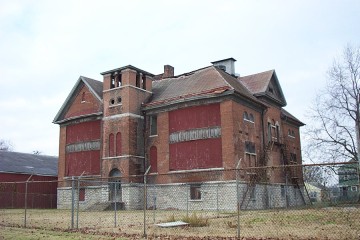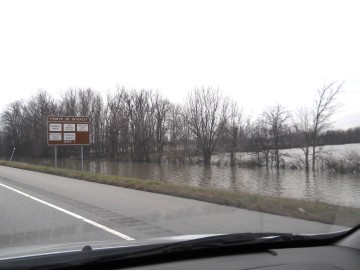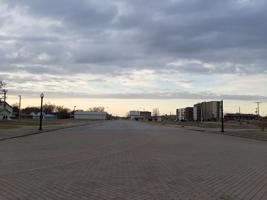Cairo, IL
Pierre Francois Xavier de Charlevoix, a French Jesuit, reported as early as 1721 that the land at the confluence of the Mississippi and Ohio Rivers would be a strategic location for settlement and fortification. Nearly a century later, in 1818, the Illinois Territorial Legislature incorporated the city and the Bank of Cairo. But Cairo was then only a paper city and plans for its development came to a standstill with the death of John Gleaves Cowegys, the leading promoter of the corporation.
The area's commercial potential again captured the imagination of Illinois leaders and eastern investors in the 1830s. New city promoters incorporated the Cairo City and Canal Company and made elaborate plans for levees, canals, factories and warehouses. The first levees failed to hold back the rampaging rivers and financial difficulties slowed the commercial boom. Company policy to lease, not sell, city lots also retarded expansion. With the first sale of lots in 1853 and the completion of the Illinois Central Railroad from Chicago to Cairo in 1854, the city began to prosper.
When the Civil War began, both Northern and Southern strategists recognized the military importance of Cairo. On April 22, 1861, ten days after the bombardment of Fort Sumter, troops arrived to hold Cairo for the Union. They established camps on the land south of Cairo and the city flourished as a troop and supply center for General Ulysses S. Grant's army. Although the city bustled with wartime activity, non-military commerce was reoriented along East-West lines. (reference)
Following the war and through the beginning of the 20th century, Cairo flourished as a major shipping port and the economic center of the region. Cairo was the served by multiple rail lines and serviced steamboat traffic on the Mississippi and Ohio Rivers. Cairo was a major ferry crossing point for rail cars and in 1886, combined river and rail shipments, evaluated at $60,000,000, gave Cairo the highest per capita commercial valuation in the United States.
However, with the opening of the Cairo railroad bridge over the Ohio River in 1889 to carry the Illinois Central Railroad from Kentucky into Illinois, the building of the Thebes Bridge over the Mississippi a little further North in 1905, and the replacement of steamboats with barges, Cairo began a long, slow decline. Although river traffic increased, barges usually hauled cargo between major cities and no longer needed to stop in Cairo. Water seepage began to seriously affect city infrastructure and make life in Cairo increasingly difficult.
The decline of Cairo was accelerated by racial unrest in the 1960s. Black residents spent almost a decade boycotting white-owned businesses (which constituted most businesses in the town) because they refused to hire blacks. After a black soldier home on leave was found hanged in a police cell in 1967, the subsequent race riots (which included protesters reputedly bused in from Chicago) lead to an exodus of businesses and residents from the city.
Perhaps the final blow to Cairo's existence as a city of any significance was the opening in 1978 of the Interstate 57 Bridge to the west. I-57 from the north had previously terminated at Cairo with traffic having to go through the city to cross the Mississippi on the terrifyingly narrow Hwy 60/62 bridge (1929). This traffic provided patronage for Cairo restaurants and motels which, as Cairo businesses had been doing for a century, gave respite to weary voyagers. But the I-57 bridge routed traffic around the town, leaving little reason for anyone to stop in what was once the Gateway to the South.



